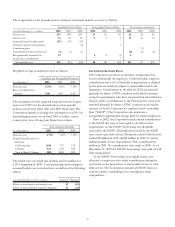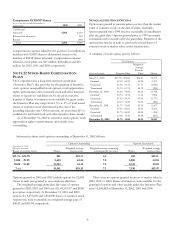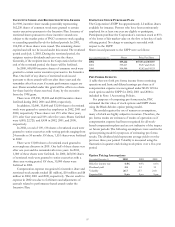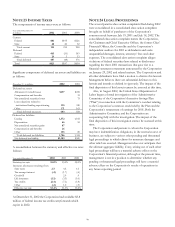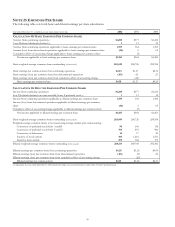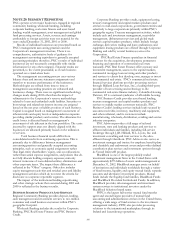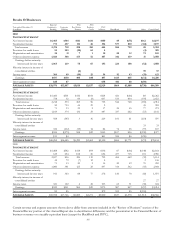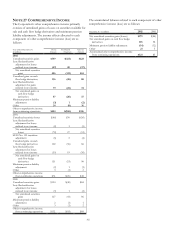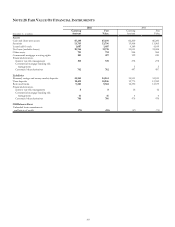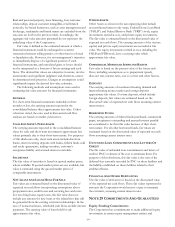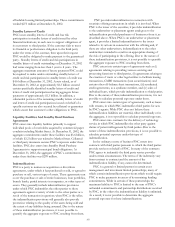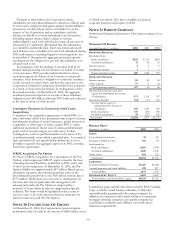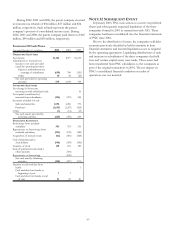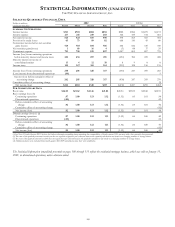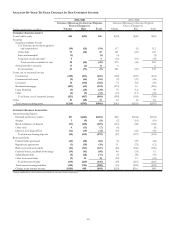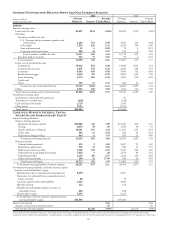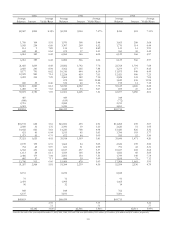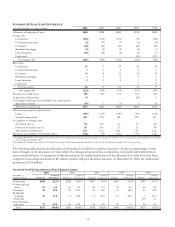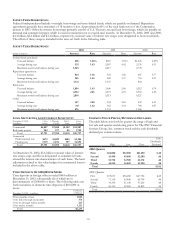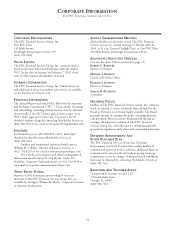PNC Bank 2002 Annual Report Download - page 107
Download and view the complete annual report
Please find page 107 of the 2002 PNC Bank annual report below. You can navigate through the pages in the report by either clicking on the pages listed below, or by using the keyword search tool below to find specific information within the annual report.105
affordable housing limited partnerships. These commitments
totaled $273 million at December 31, 2002.
Standby Letters of Credit
PNC issues standby letters of credit and has risk
participation in standby letters of credit issued by other
financial institutions, in each case to support obligations of
its customers to third parties. If the customer fails to meet
its financial or performance obligation to the third party
under the terms of the contract, then upon their request
PNC would be obligated to make payment to the guaranteed
party. Standby letters of credit and risk participations in
standby letters of credit outstanding on December 31, 2002
had terms ranging from less than 1 year to 8 years. The
aggregate maximum amount of future payments PNC could
be required to make under outstanding standby letters of
credit and risk participations in standby letters of credit was
$4.6 billion at December 31, 2002. Assets valued, as of
December 31, 2002, at approximately $1.3 billion secured
certain specifically identified standby letters of credit and
letter of credit risk participations having aggregate future
payments of approximately $1.3 billion. In addition, a
substantial portion of the remaining standby letters of credit
and letter of credit risk participations issued on behalf of a
specific customer are also secured by collateral or guarantees
which secure that customer’s other obligations to PNC.
Liquidity Facilities And Standby Bond Purchase
Agreements
PNC enters into liquidity facilities primarily to support
individual pools of receivables acquired by commercial paper
conduits including Market Street. At December 31, 2002, the
aggregate commitments under these facilities was $3.6 billion,
of which $3.2 billion was related to Market Street. Collateral
or third party insurance secures PNC’s exposure under these
facilities. PNC also enters into Standby Bond Purchase
Agreements to support municipal bond obligations. At
December 31, 2002, the aggregate of PNC’s commitments
under these facilities was $299 million.
Indemnifications
PNC is a party to numerous acquisition or divestiture
agreements, under which it has purchased or sold, or agreed to
purchase or sell, various types of assets. These agreements can
cover the purchase or sale of entire businesses, loan portfolios,
branch banks, partial interests in companies, or other types of
assets. They generally include indemnification provisions
under which PNC indemnifies the other parties to these
agreements against a variety of risks to the other parties as a
result of the transaction in question; when PNC is the seller,
the indemnification provisions will generally also provide
protection relating to the quality of the assets being sold and
the extent of any liabilities being assumed. Due to the nature
of these indemnification provisions, it is not possible to
quantify the aggregate exposure to PNC resulting from them.
PNC provides indemnification in connection with
securities offering transactions in which it is involved. When
PNC is the issuer of the securities, it provides indemnification
to the underwriter or placement agents analogous to the
indemnification provided purchasers of businesses from it, as
described above. When PNC is an underwriter or placement
agent, it provides a limited indemnification to the issuer
related to its actions in connection with the offering and, if
there are other underwriters, indemnification to the other
underwriters intended to result in an appropriate sharing of
the risk of participating in the offering. Due to the nature of
these indemnification provisions, it is not possible to quantify
the aggregate exposure to PNC resulting from them.
PNC enters into certain types of agreements such as (i)
agreements relating to providing various servicing and
processing functions to third parties, (ii) agreements relating to
the creation of trusts or other legal entities to facilitate leasing
transactions, CMBS transactions (loan securitizations) and
certain other off-balance sheet transactions, (iii) syndicated
credit agreements, as a syndicate member, and (iv) sales of
individual loans, which provide indemnification to third parties.
Due to the nature of these indemnification provisions, it is not
possible to calculate potential exposure under them.
PNC enters into certain types of agreements, such as leases
with tenants, in which PNC indemnifies third parties for acts
by PNC’s agents. While PNC does not believe these
indemnification liabilities are material, either individually or in
the aggregate, it is not possible to calculate potential exposure.
PNC enters into contracts for the delivery of technology
service in which PNC indemnifies the other party against
claims of patent infringement by third parties. Due to the
nature of these indemnification provisions, it is not possible to
calculate potential exposure under this type of
indemnification.
In the ordinary course of business PNC enters into
contracts with third parties pursuant to which the third parties
provide services on behalf of PNC. In many of the contracts
PNC agrees to indemnify the third party service provider
under certain circumstances. The terms of the indemnity vary
from contract to contract and the amount of the
indemnification liability, if any, cannot be determined.
PNC is a general or limited partner in certain asset
management and investment limited partnerships, many of
which contain indemnification provisions which would require
PNC to make payments in excess of its remaining funding
commitments. While in certain of these partnerships the
maximum liability to PNC is limited to the sum of PNC’s
unfunded commitments and partnership distributions received
by PNC, in the others the indemnification liability is unlimited.
As a result, it is not possible to determine the aggregate
potential exposure for these indemnifications.


